The Impact of Colour in Rug Selection

When discussing visual elements, the first thing that comes to mind is colour. Whether adding a little splash of bright red or neutral beige in your room, you need to find out how it will impact your mood. Understanding rug colour psychology will allow you to choose the right shade.
Colour has the incredible ability to affect our behaviours, thoughts, and feelings. It is a powerful tool in interior design that helps you create spaces which are not only visually appealing but also emotionally engaging.
For a living room, an interior designer usually recommends a rug. To add a little personality to the space, choosing the right colour gives it a dramatic effect. For example, neutral colours make a room appear larger, whereas dark colours give an elegant appearance. Before choosing rug colours for your rooms, you need to determine the space’s purpose.
Let’s take a look at which coloured rug gives your space the vibe you are going for:
Warm Colours
Yellow, red, and orange are considered warm colours. They are associated with passion, warmth, and energy. They stimulate creativity and conversation, making them excellent dining and living room choices.
Warm hues create an inviting and cosy atmosphere. For example, an earthy orange rug will give your living room a cheerful vibe, vibrant yellow will create a sense of happiness, and a rich red will make a room appear livelier.
Cool Colours
Purple, green, and blue are considered cool colours. They evoke feelings of relaxation, serenity, and calmness, making them ideal for your bedroom and meditation room. For example, blue is a calming colour, which helps you wind down after a tiring workday, green is the colour of nature and encourages harmony and balance, and purple infuses calmness and elegance in a room.
Vibrant Hues
Vibrant colours like electric blue and hot pink make a bold statement and add a sense of drama to your space. They are energetic and associated with zest and vitality. It might feel like they have no space in your house but they work well in rooms such as home offices, art studios, and playrooms where stimulation is needed. A vibrant rug piques your interest and gives you this surge of energy that sparks a fire inside you.
Remember: A room furnished with a vibrant rug should be balanced with neutral-coloured furniture because too much brilliance is distracting and can become tiresome.
Neutral Colours
Neutral colours are often described as lacking in vibrancy, muted, and understated. Common colours under this category include black, white, grey, and shades of beige and brown. They are known for their ability to create a sense of harmony and balance in aesthetics and design. Unlike cool, vibrant colours that elicit strong emotional responses, neutrals are wholesome and evoke more subdued feelings.
When selecting a rug in a neutral colour, focus on its patterns and texture to add visual interest and depth to your room. For example, a beige rug with a geometric pattern speaks of luxury, and a plush grey rug creates an inviting and cosy atmosphere.
Metallic Accents
The three most common metallic accents used in interior design are copper, gold, and silver. They add a touch of opulence and luxury to your space. Metallic accents are considered glamorous thanks to their rich shades. A touch of shimmer will add royalty to the room and impress your guest.
For example, gold has a warm and inviting quality. It symbolizes accomplishment and achievement, making it perfect for study spaces and home offices. Silver is a sleek colour with a minimalist vibe. Its cooling effect makes it suitable for spaces where relaxation is essential. The shine of gold and the warmth of red in copper create a contemporary space, which is ideal for the kitchen.
Now that you know what different colours represent and how they influence your mood, you can easily furnish your rooms with the right rugs. Here’s a pro tip when choosing rug colours: Buy your furniture first for the right shade. If your walls are white, you can get a little creative and decorate the space with contrasting colours.
The Rugs offers a large selection of stylish rugs with unique designs. The company's website displays different rugs in various categories, including room, colour, type, and size. Check out their blog for home décor inspirations. For more information, get in touch with them through Live Chat.
The Psychology of Colours in Interior Design
Colour psychology plays a crucial role in interior design. Each colour evokes a specific emotion and can influence the way we perceive a space. For instance, warm colours like red, orange, and yellow can create a cosy, inviting atmosphere, while cool colours like blue, green, and purple can have a calming, serene effect. Understanding the psychological impact of different colours is essential when selecting the perfect rug for your home.

Factors to Consider When Choosing a Rug Colour
When it comes to choosing the perfect rug colour, there are several factors to consider:
-
Room Size and Lighting: The size of the room and the amount of natural and artificial lighting can greatly impact the way a rug colour is perceived. Lighter colours can make a small space feel more open and airy, while darker colours can add depth and coziness to a larger room.
-
Existing Decor and Furniture: Ensuring that the rug colour complements your existing furniture, wall colours, and accessories is vital for creating a cohesive and visually appealing space.
-
Personal Style and Preferences: Ultimately, the rug colour you choose should reflect your personal style and preferences. Consider the mood and atmosphere you want to create in the room and select a colour that aligns with your vision.
Understanding Different Colour Schemes for Rugs
When it comes to rug colours, there are several colour schemes to consider:
-
Monochromatic: A monochromatic colour scheme uses different shades, tints, and tones of the same base colour, creating a harmonious and calming effect.
-
Analogous: An analogous colour scheme uses colours that are adjacent on the colour wheel, such as blue and green or red and orange, resulting in a visually cohesive and soothing palette.
-
Complementary: A complementary colour scheme uses colours that are opposite each other on the colour wheel, such as red and green or blue and orange, creating a bold and dynamic contrast.
-
Triadic: A triadic colour scheme uses three colours that are evenly spaced on the colour wheel, resulting in a vibrant and energetic palette.
Understanding these colour schemes can help you make informed decisions when selecting the perfect rug colour for your space.

How to Match Rug Colours with Existing Furniture and Decor
Ensuring that your rug colour seamlessly integrates with your existing furniture and decor is crucial for creating a cohesive and visually appealing space. Here are some tips to help you achieve the perfect match:
-
Identify the dominant colours in your room: Take a close look at your existing furniture, wall colours, and accessories to determine the dominant colours in the space.
-
Choose a rug colour that complements or contrasts: Select a rug colour that either complements the dominant colours or provides a contrasting accent to create visual interest.
-
Consider the undertones: Pay attention to the undertones of your existing colours and choose a rug with similar undertones for a harmonious look.
-
Experiment with samples: Order rug samples and place them in your space to see how they interact with the existing decor before making a final decision.

Tips for Choosing the Perfect Rug Colour for Different Rooms
The perfect rug colour can vary depending on the room's purpose and function. Here are some tips for choosing the perfect rug colour for different areas of your home:
-
Living Room: In the living room, consider warm, inviting colours like beige, tan, or earthy tones to create a cosy atmosphere. Alternatively, you can opt for a bold, patterned rug to add visual interest.
-
Dining Room: In the dining room, choose a rug colour that complements the table and chairs, such as a rich, jewel-toned rug or a neutral tone that grounds the space.
-
Bedroom: In the bedroom, select a soothing, calming colour like soft blues, greens, or greys to promote relaxation and serenity.
-
Home Office: In the home office, consider a rug colour that promotes focus and productivity, such as a neutral tone or a subtle pattern.
-
Entryway: In the entryway, a bold, patterned rug can make a statement and set the tone for the rest of the home.
Popular Rug Colours for Different Interior Design Styles
The perfect rug colour can also depend on the overall interior design style of your home. Here are some popular rug colours for different design styles:
-
Traditional: Rich, jewel-toned colours like burgundy, navy, or forest green work well in traditional-style homes.
-
Modern: Sleek, neutral tones like grey, beige, or black are popular choices for modern and contemporary spaces.
-
Farmhouse: Earthy, natural tones like cream, tan, or sage green complement the rustic, cosy aesthetic of farmhouse-style homes.
-
Boho: Vibrant, eclectic colours and patterns, such as Moroccan-inspired rugs, are perfect for a bohemian-inspired space.
-
Minimalist: Monochromatic or neutral-toned rugs, like solid white or grey, work well in minimalist interiors.

How to Use Colour Accents with Rugs to Enhance Your Space
In addition to the overall rug colour, you can also use colour accents to enhance your space. Incorporating pops of colour through throw pillows, artwork, or other accessories can create a visually striking and cohesive look. When choosing colour accents, consider the undertones of your rug and select complementary or contrasting hues to create a harmonious and visually appealing aesthetic.
Rug Colour Mistakes to Avoid
When it comes to choosing the perfect rug colour, there are a few common mistakes to avoid:
- Selecting a rug that is too small for the space
- Choosing a rug colour that clashes with the existing decor
- Opting for a rug colour that is too dark or too light for the room's lighting
- Failing to consider the rug's undertones and how they will interact with the room's existing colours
- Neglecting to test rug samples in the space before making a final decision
By being mindful of these common pitfalls, you can ensure that you select the perfect rug colour to enhance your interior design.
Conclusion: Finding the Perfect Rug Colour for Your Space
Choosing the perfect rug colour is an art form that requires consideration of various factors, from room size and lighting to personal style and existing decor. By understanding the psychology of colours, exploring different colour schemes, and tailoring your selection to the specific needs of each room, you can create a visually stunning and cohesive interior design that truly reflects your unique aesthetic.

Rug Selection Mistakes: Common Pitfalls to Avoid
When choosing a rug for your home, it's easy to make mistakes that can impact the overall look and feel of your space. One of the most common errors is selecting the wrong size, which can make a room feel disjointed or cramped. Another frequent mistake is ignoring the room's colour scheme, leading to a rug that clashes with existing decor. Many people also overlook the importance of material, choosing rugs that aren't suitable for high-traffic areas or specific needs. Remember to consider maintenance requirements and durability to ensure your rug remains beautiful for years to come.
Rug Selection: Key Factors for Choosing the Perfect Floor Covering
Selecting the right rug involves considering several crucial factors. Start by measuring your space accurately to determine the ideal rug size. Consider the room's function and choose a material that can withstand the expected foot traffic. Pay attention to the existing colour palette and select a rug that complements or enhances it. Don't forget to factor in texture and pattern, which can add depth and interest to your space. Lastly, consider your budget and long-term maintenance requirements to ensure you're making a wise investment.
Rug Colour Selection: Harmonising Hues in Your Home
Choosing the right rug colour can dramatically impact your room's ambiance. Consider the existing colour scheme of your space and decide whether you want the rug to blend in or stand out. Neutral tones like beige, grey, or cream offer versatility and can easily adapt to changing decor. For a bolder look, consider vibrant colours or patterns that can serve as a focal point. Remember that lighter colours can make a room feel more spacious, while darker hues can add cosiness and warmth.

Best Rug Selection: Top Choices for Every Room
The best rug selection depends on the specific needs of each room. For living rooms, consider durable materials like wool or synthetic blends that can withstand heavy use. In bedrooms, prioritise soft, plush rugs that feel luxurious underfoot. Dining room rugs should be stain-resistant and easy to clean, while kitchen rugs benefit from water-resistant materials. For outdoor spaces, look for rugs specifically designed to withstand the elements. Always consider quality construction and timeless designs that will look great for years to come.

Rug Psychology Selection: The Impact of Rugs on Mood and Perception
The rugs we choose can significantly influence our mood and perception of a space. Warm colours like reds and oranges can create a cosy, energetic atmosphere, while cool tones like blues and greens promote calmness and relaxation. Patterns can affect our perception of room size – large patterns can make a space feel smaller, while small, repetitive patterns can expand it. Consider the psychological impact of texture as well; plush, soft rugs can create a sense of comfort and luxury, while sleek, low-pile rugs can convey modernity and simplicity.

Large Rug Selection: Making a Statement with Oversized Floor Coverings
Large rugs can dramatically transform a space, anchoring furniture and defining areas within a room. When selecting a large rug, ensure it's proportionate to your room size and furniture arrangement. In living rooms, aim for a rug that allows all furniture legs to rest on it for a cohesive look. For dining rooms, choose a rug that extends beyond the table and chairs, even when pulled out. Consider bold patterns or rich textures that can serve as a focal point in spacious areas. Remember that large rugs are an investment, so prioritise quality materials and timeless designs that will endure for years.
People Also Asked
How to pick the color of your rug?
Choose a rug color that complements your existing decor. Consider the room's color scheme, furniture, and flooring. Opt for colors that create harmony or provide a desired contrast.
Should a rug be darker or lighter than the floor?
A rug can be either darker or lighter than the floor. For a cohesive look, choose a rug slightly lighter than the floor. For contrast and definition, opt for a darker rug.
Should carpet be lighter or darker than furniture?
Generally, carpet should be lighter than furniture to create depth and make the room feel more spacious. However, a darker carpet can add coziness and ground the space.
Which carpet color to choose?
Select a carpet color that complements your overall decor. Consider factors like room size, lighting, furniture, and wall colors. Neutral tones offer versatility, while bold colors make a statement.
What color rug makes a room look bigger?
Light-colored rugs tend to make a room look bigger by reflecting more light and creating an illusion of space. Opt for beige, cream, or pale gray tones.
What color rug hides the most dirt?
Multi-colored rugs with intricate patterns or medium-toned rugs in shades like beige, tan, or gray are best at hiding dirt and stains.
What color rug goes with dark walls?
With dark walls, choose a rug that lightens the space. Opt for light neutrals or vibrant colors to create contrast and balance the room's atmosphere.
How do you match a rug with furniture?
Match a rug with furniture by selecting colors present in your upholstery or artwork. Aim for complementary or contrasting hues that enhance the overall room design.
Do dark rugs make a room look small?
Dark rugs can make a room look smaller, but this effect can be mitigated by proper lighting and balancing with lighter furniture and walls.
Should your rug match your wall color?
Your rug doesn't need to match your wall color exactly. Aim for complementary tones or choose a rug that picks up accent colors from your walls for a cohesive look.
Should your rug match your floor?
Your rug doesn't need to match your floor exactly. Aim for complementary colors or a slight contrast to create visual interest and define the space.
What color rug is best for stains?
For stain resistance, choose medium-toned rugs with patterns or flecks. Colors like beige, tan, or gray with varied textures help conceal stains effectively.
What color rug should I get with a dark grey couch?
With a dark grey couch, consider rugs in light neutrals like beige or cream, or add a pop of color with jewel tones like emerald or sapphire blue.
What is the best color carpet for not showing dirt?
The best carpet colors for hiding dirt are medium shades with flecked or patterned designs. Consider options like beige, tan, or gray with subtle variations.
How do I choose a rug color?
Choose a rug color by considering your room's color scheme, desired atmosphere, and practical needs. Balance between complementing existing decor and making a statement.
What color carpet is timeless?
Neutral tones like beige, gray, and taupe are timeless carpet colors that offer versatility and longevity in home decor.
What colour carpet is most practical?
The most practical carpet colors are medium shades with subtle patterns or flecks. Beige, tan, and gray are popular choices for their dirt-hiding properties.
What color carpet stays cleanest?
Carpets that appear cleanest are typically medium-toned with specked or patterned designs. Colors like beige, tan, or gray with subtle variations hide dirt well.
Is grey or beige carpet better?
Both grey and beige carpets have their merits. Grey is modern and versatile, while beige offers warmth and timelessness. Choose based on your room's color scheme and desired atmosphere.
Is lighter or darker carpet better?
The choice between lighter or darker carpet depends on your space. Lighter carpets can make a room feel larger and brighter, while darker carpets add coziness and hide stains better.
What is the most neutral carpet color?
The most neutral carpet colors are beige, taupe, and light gray. These shades offer versatility and easily complement various decor styles.
What color carpet is popular now?
Currently, popular carpet colors include cool grays, warm beiges, and soft blues. Homeowners are also embracing bolder choices like jewel tones for statement spaces.
What color carpet makes room feel bigger?
Light-colored carpets in shades of cream, beige, or pale gray can make a room feel bigger by reflecting more light and creating an illusion of space.
Is grey carpet a good choice?
Grey carpet is an excellent choice for its versatility and modern appeal. It complements various color schemes and can hide dirt effectively, especially in medium tones.
What is the hardest color to get out of carpet?
The hardest colors to remove from carpet are typically deep reds, bright blues, and dark purples. These intense hues can stain carpet fibers more persistently.
Should carpet match walls or furniture?
Carpet doesn't need to match walls or furniture exactly. Aim for complementary tones that create a cohesive look while allowing each element to stand out.
How to choose rug color?
Choose a rug color by considering your room's color palette, desired atmosphere, and practical needs. Balance between complementing existing decor and making a statement.
What does dark carpet do to a room?
Dark carpet can make a room feel cozier and more intimate. It can also hide stains effectively but may make the space appear smaller if not balanced with lighter elements.
What color carpet is best for bedrooms?
For bedrooms, opt for calming, neutral tones like soft grays, beiges, or blues. These colors create a relaxing atmosphere conducive to rest.
Which colour carpet goes with everything?
Neutral-toned carpets in beige, taupe, or light gray are versatile and go with almost everything, making them ideal for changing decor styles.
Should I get light or dark area rug?
The choice between a light or dark area rug depends on your space. Light rugs make rooms feel larger, while dark rugs add coziness and hide stains better.
How to pick the color of carpet?
Pick carpet color by considering your room's lighting, size, existing decor, and practical needs. Balance aesthetic preferences with functionality.
What color rug does not get dirty?
Rugs that appear less dirty are typically medium-toned with patterns or flecks. Colors like beige, tan, or gray with subtle variations hide dirt well.
How do you match a rug to a room?
Match a rug to a room by considering the existing color scheme, furniture style, and overall aesthetic. Choose colors that complement or provide desired contrast.
What is the trend in carpet color?
Current carpet color trends include cool grays, warm neutrals, and soft, muted tones. There's also a growing interest in bold, statement colors for accent spaces.
Should carpet be lighter or darker than furniture?
Generally, carpet should be lighter than furniture to create depth and make the room feel more spacious. However, a darker carpet can add coziness and ground the space.
What color rug makes room bigger?
Light-colored rugs in shades of cream, beige, or pale gray can make a room appear bigger by reflecting more light and creating an illusion of space.
What is the best color for a rug?
The best rug color depends on your specific needs. Neutral tones offer versatility, while bold colors make a statement. Consider your room's decor and desired atmosphere.
Should a rug blend or contrast with the floor?
A rug can either blend or contrast with the floor, depending on your design goals. A slight contrast often creates visual interest without overwhelming the space.
Do dark rugs make a room look small?
Dark rugs can make a room look smaller, but this effect can be mitigated by proper lighting and balancing with lighter furniture and walls.
Should rug be same color as walls?
A rug doesn't need to be the same color as walls. Aim for complementary tones or choose a rug that picks up accent colors from your walls for a cohesive look.
Is a dark rug a good idea?
A dark rug can be a good idea for hiding stains, creating a cozy atmosphere, and grounding a space. Balance it with lighter elements to prevent the room from feeling too small.
What color rug goes with light floors?
With light floors, consider rugs in deeper, richer tones to create contrast, or opt for soft, complementary hues for a more harmonious look.
Should a rug be darker or lighter than the floor?
A rug can be either darker or lighter than the floor. For a cohesive look, choose a rug slightly lighter than the floor. For contrast and definition, opt for a darker rug.
What color rug hides the most dirt?
Multi-colored rugs with intricate patterns or medium-toned rugs in shades like beige, tan, or gray are best at hiding dirt and stains.
What colour carpet looks the cleanest?
Carpets that appear cleanest are typically light to medium-toned with subtle patterns or flecks. Colors like beige, light gray, or taupe maintain a clean look.
Is carpet supposed to be darker than walls?
Carpet is not necessarily supposed to be darker than walls. A lighter carpet can make a room feel more spacious, while a darker carpet can add coziness.
What color carpet is timeless?
Neutral tones like beige, gray, and taupe are timeless carpet colors that offer versatility and longevity in home decor.
What colour carpet is most practical?
The most practical carpet colors are medium shades with subtle patterns or flecks. Beige, tan, and gray are popular choices for their dirt-hiding properties.
What color carpet makes a room look bigger?
Light-colored carpets in shades of cream, beige, or pale gray can make a room look bigger by reflecting more light and creating an illusion of space.
What colour carpet is popular now?
Currently, popular carpet colors include cool grays, warm beiges, and soft blues. Homeowners are also embracing bolder choices like jewel tones for statement spaces.
Is grey or beige carpet better?
Both grey and beige carpets have their merits. Grey is modern and versatile, while beige offers warmth and timelessness. Choose based on your room's color scheme and desired atmosphere.
What is the most neutral carpet color?
The most neutral carpet colors are beige, taupe, and light gray. These shades offer versatility and easily complement various decor styles.
Should the carpet match the walls?
Carpet doesn't need to match walls exactly. Aim for complementary tones that create a cohesive look while allowing each element to stand out.
Does carpet look darker or lighter?
Carpet often appears slightly darker when installed compared to small samples due to the larger surface area and lighting conditions in the room.
Is grey carpet a good choice?
Grey carpet is an excellent choice for its versatility and modern appeal. It complements various color schemes and can hide dirt effectively, especially in medium tones.
What is the hardest color to get out of carpet?
The hardest colors to remove from carpet are typically deep reds, bright blues, and dark purples. These intense hues can stain carpet fibers more persistently.
How to choose the perfect rug color?
Selecting the ideal rug color involves considering your room's existing color scheme and desired atmosphere. Choose a hue that complements your furniture and wall colors. For a cohesive look, pick a shade from your room's color palette. To make a statement, opt for a contrasting color that adds visual interest. Consider the room's purpose and lighting when making your selection.
How to dye sections of a rug?
Dyeing specific sections of a rug requires careful planning and execution. Begin by thoroughly cleaning the rug and allowing it to dry completely. Use fabric dye suitable for your rug's material. Apply painter's tape to create clean borders between sections. Carefully brush or sponge the dye onto the desired areas, working the color into the fibers. Allow the dye to set according to manufacturer instructions before rinsing and drying.
How do you add color to a rug?
Adding color to a rug can breathe new life into your space. Consider using fabric dye for a permanent solution, following manufacturer guidelines for your rug's material. For a temporary option, try fabric paint or spray chalk for specific designs or patterns. Alternatively, layer colorful throw pillows or blankets on the rug to introduce pops of color without altering the rug itself.
Should a rug match the sofa or walls?
A rug doesn't need to exactly match your sofa or walls, but it should complement the overall room design. Consider choosing a rug that incorporates colors from both your sofa and walls to tie the room together. Alternatively, use the rug to add a contrasting element that enhances your color scheme. The key is to create a cohesive look that balances your room's elements while adding visual interest.
Can you dye a carpet that is already installed?
Dyeing an installed carpet is possible but challenging. It's best to hire a professional carpet dyer for optimal results. They use specialized equipment to apply dye evenly and ensure proper penetration. If attempting DIY, use a fabric dye suitable for your carpet material and apply it with a sprayer for even coverage. Be aware that the results may be unpredictable, and some carpets, especially synthetic ones, may not accept dye well.
What paint to use on rugs?
For painting rugs, use fabric paint specifically designed for textiles. These paints are flexible and won't crack or peel with use. Acrylic paints mixed with a fabric medium can also work well. For a more temporary option, consider chalk paint or spray chalk. Always test the paint on a small, inconspicuous area first to ensure compatibility and desired results.
What is one method of finishing the edges of a rug?
One popular method for finishing rug edges is binding. This technique involves wrapping a strip of fabric or synthetic material around the rug's edge and securely stitching it in place. Binding creates a clean, durable border that prevents fraying and adds a polished look to the rug. It's particularly useful for custom-cut rugs or those with raw edges.
How can I make my rug look good?
Enhance your rug's appearance by keeping it clean and well-maintained. Regular vacuuming and prompt stain removal are essential. Consider professional cleaning annually for deep rejuvenation. Rotate the rug periodically to ensure even wear. Add a quality rug pad underneath for better support and longevity. Style your rug by arranging furniture to showcase its best features and complement its design.
Can you put two different colored rugs in the same room?
Yes, you can use two differently colored rugs in one room to create visual interest and define separate areas. Ensure the rugs complement each other and the overall room design. Choose colors that share a common element or theme for cohesion. Consider using rugs with different patterns but similar color palettes, or vice versa. The key is to create a balanced and harmonious look that enhances your space.
What is the best way to dye carpet?
The best way to dye carpet is to use a professional-grade carpet dye and follow manufacturer instructions carefully. Start by thoroughly cleaning the carpet and allowing it to dry completely. Apply the dye evenly using a sprayer or brush, working in small sections. For large areas, consider renting a carpet dyeing machine for more consistent results. Always test the dye on a small, hidden area first to ensure color accuracy and compatibility.
How to choose a rug color?
Choosing a rug color involves considering your room's existing decor and purpose. Analyze your color scheme, including wall paint, furniture, and accessories. For a harmonious look, select a rug color that complements these elements. To create a focal point, choose a contrasting color that stands out. Consider the room's lighting and size – lighter colors can make a space feel larger, while darker hues add coziness. Don't forget to factor in practicality, opting for colors that can hide dirt in high-traffic areas.
Related Blog Posts
The Impact of Colour in Rug Selection
Related Rug Collections




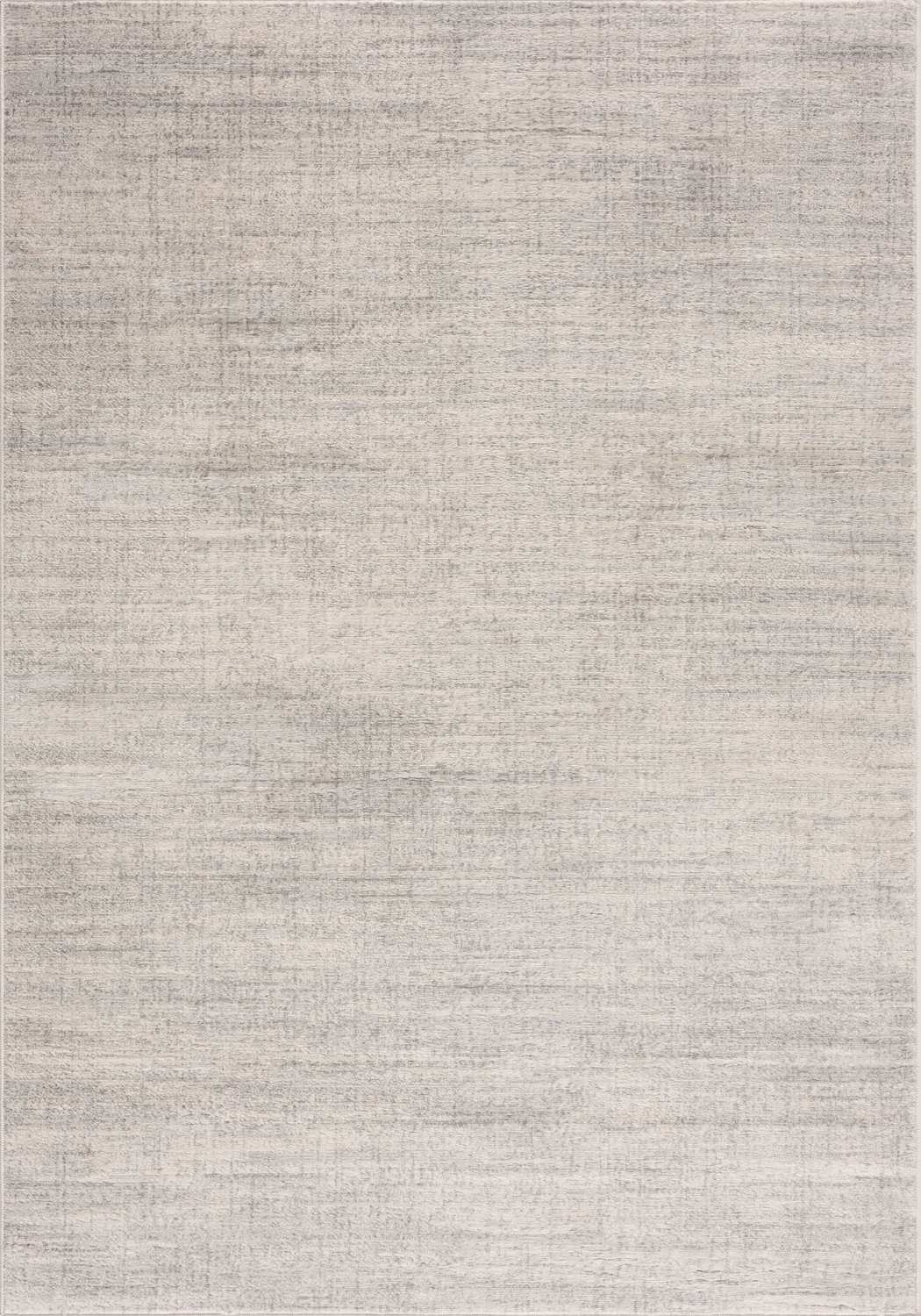
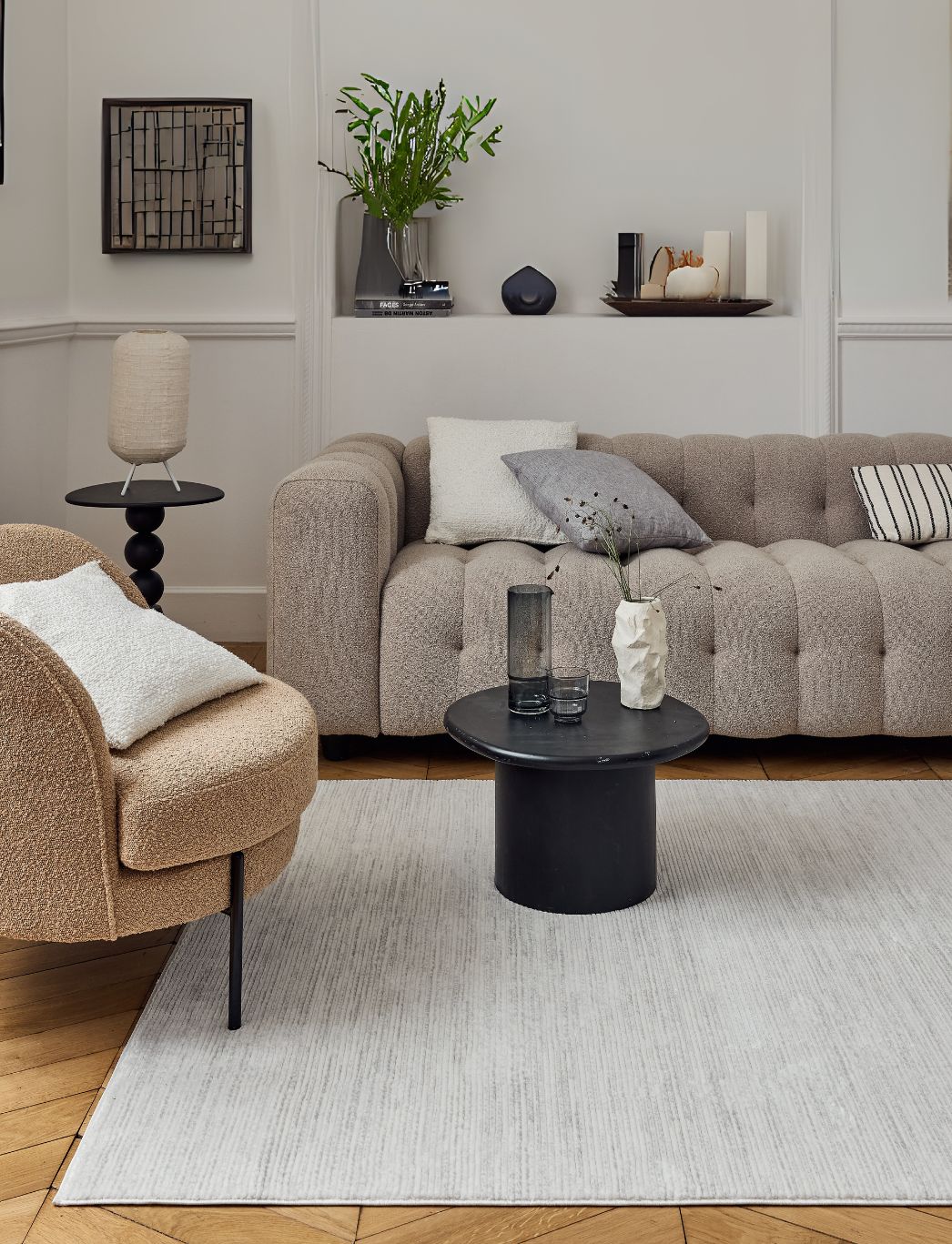
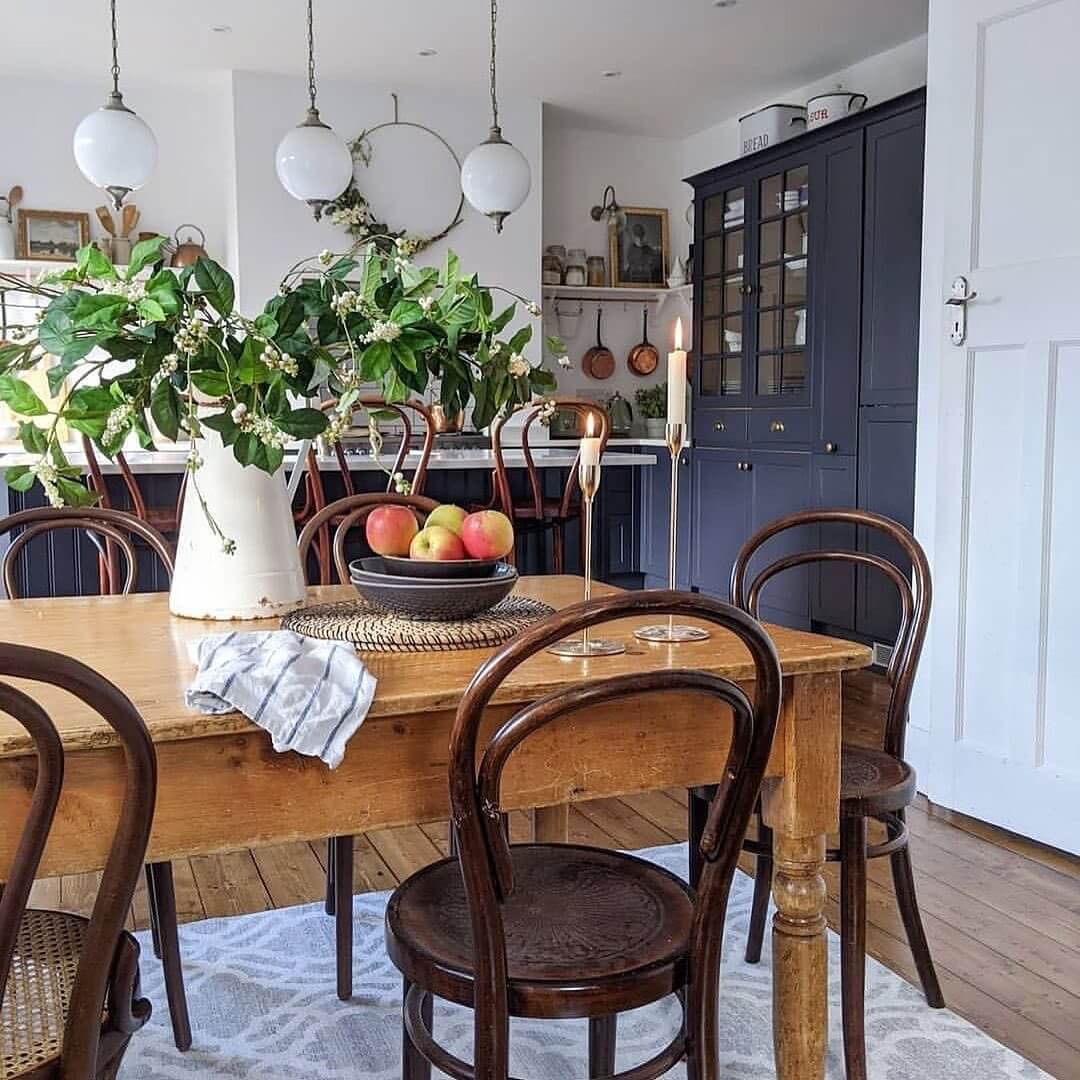
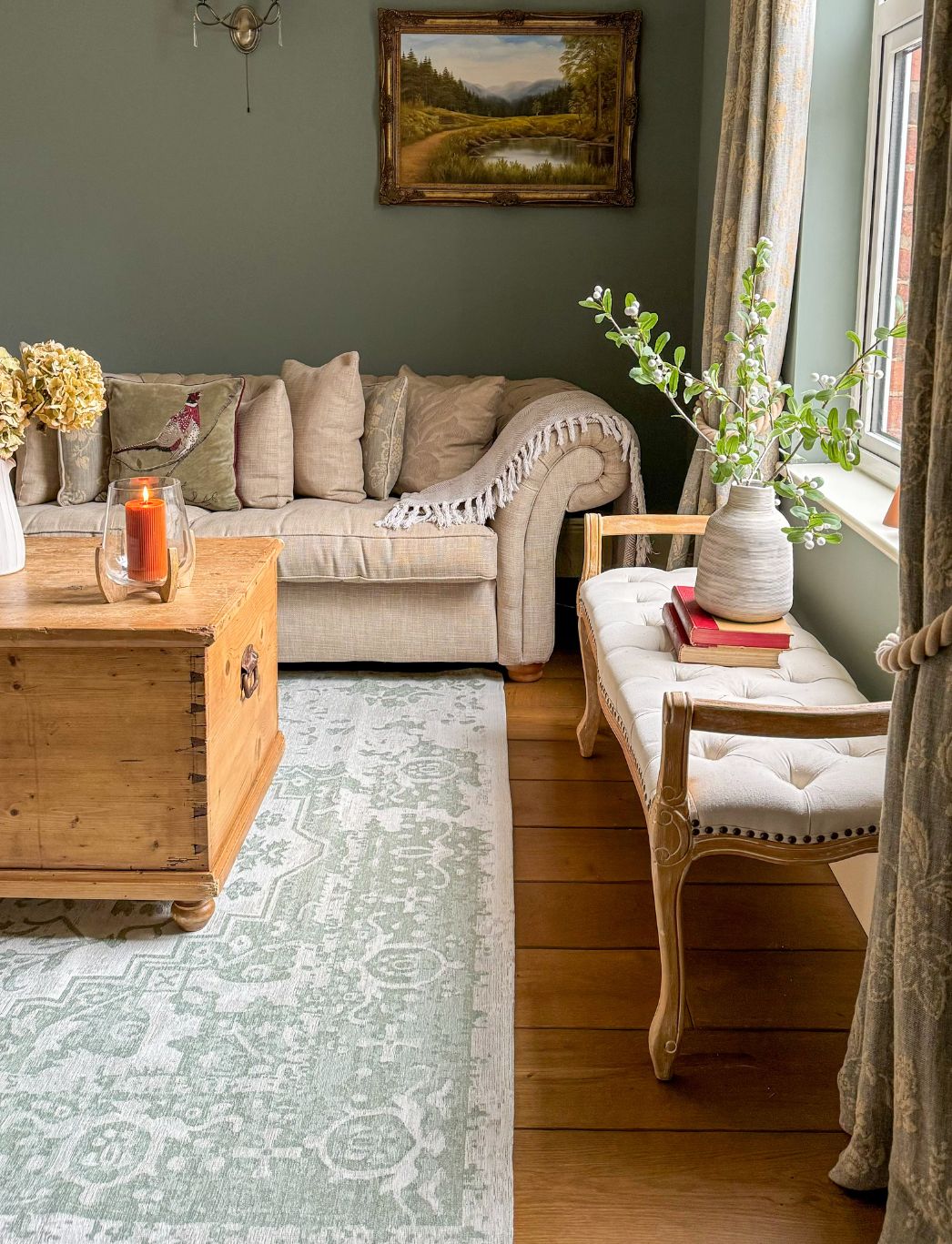
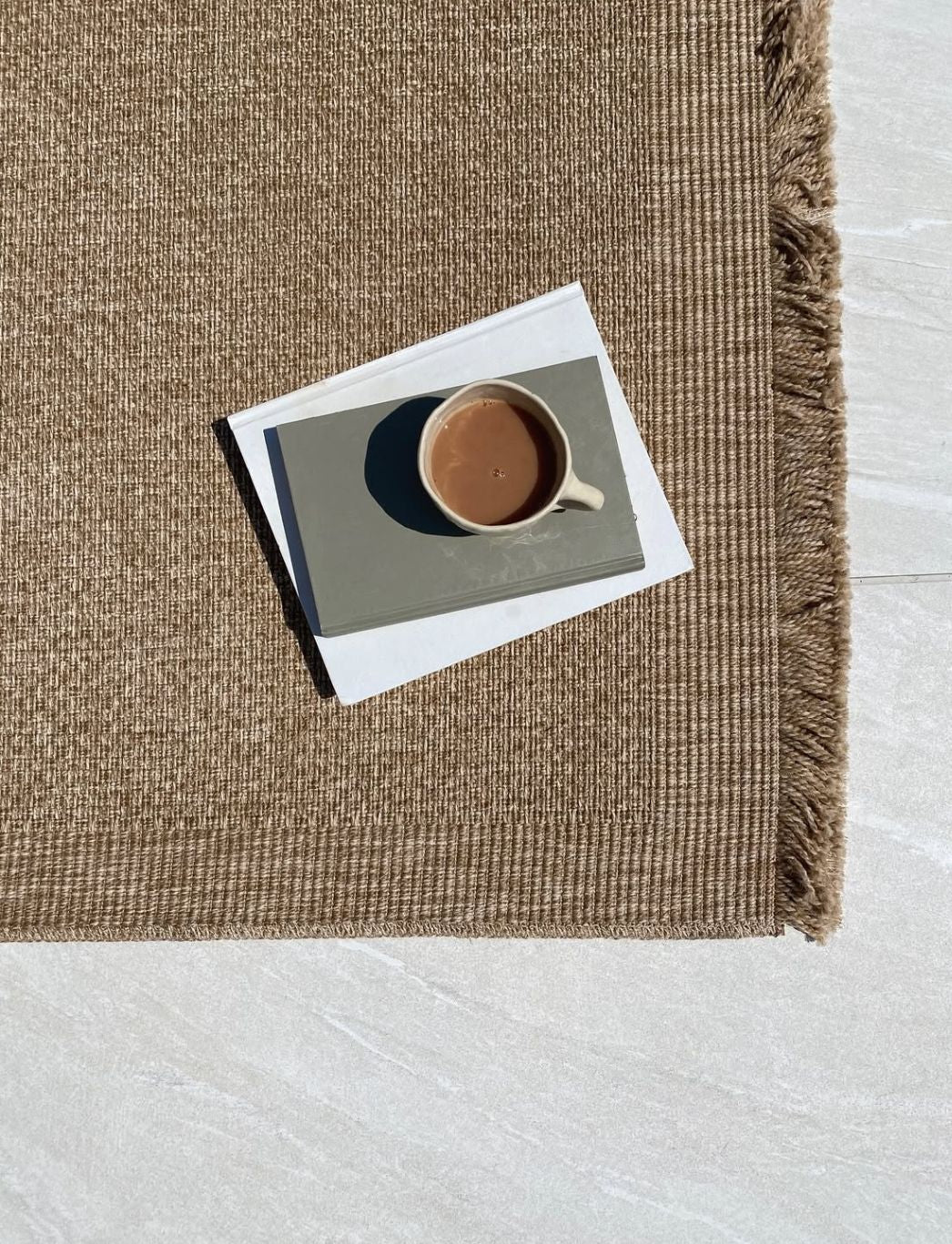
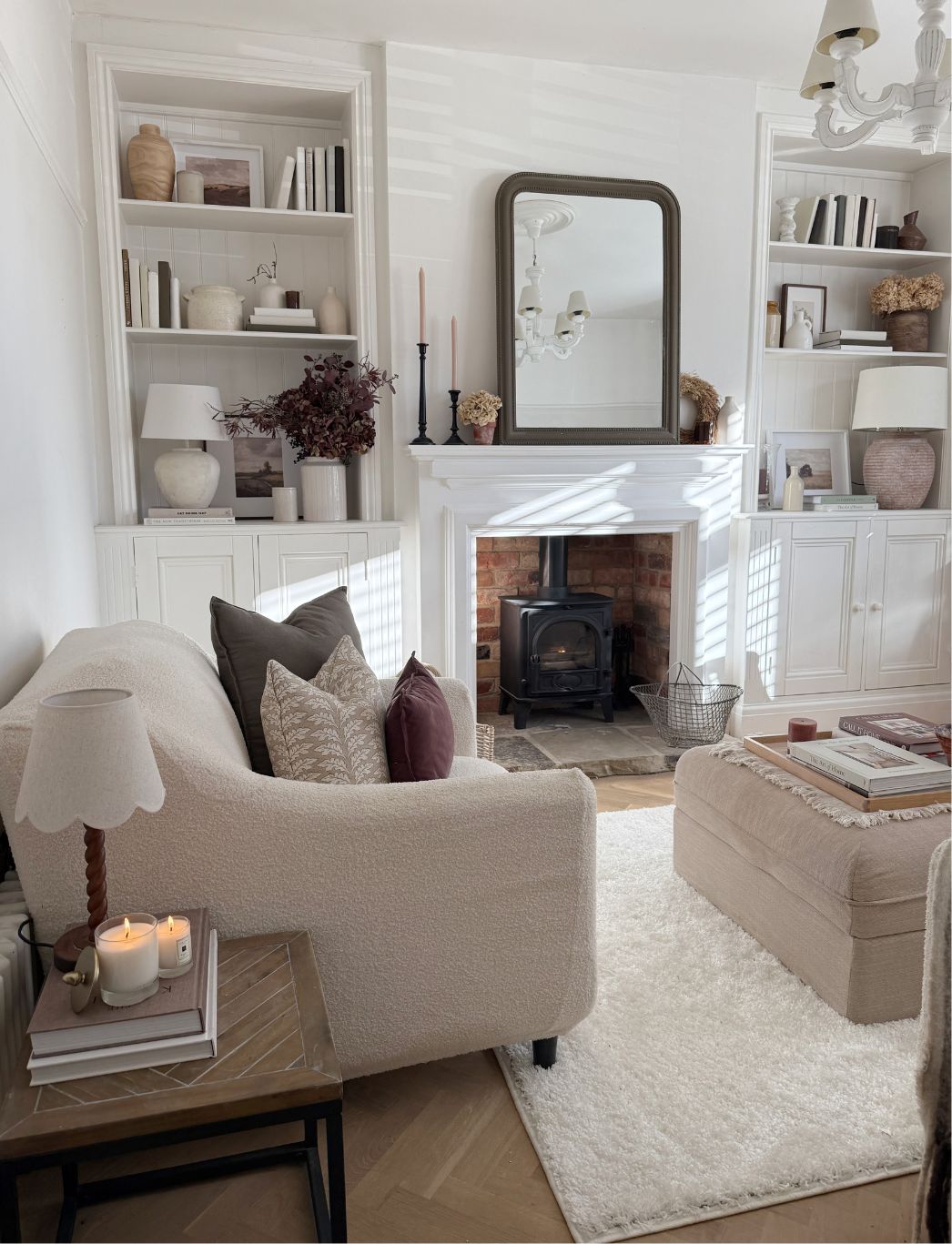
Leave a comment